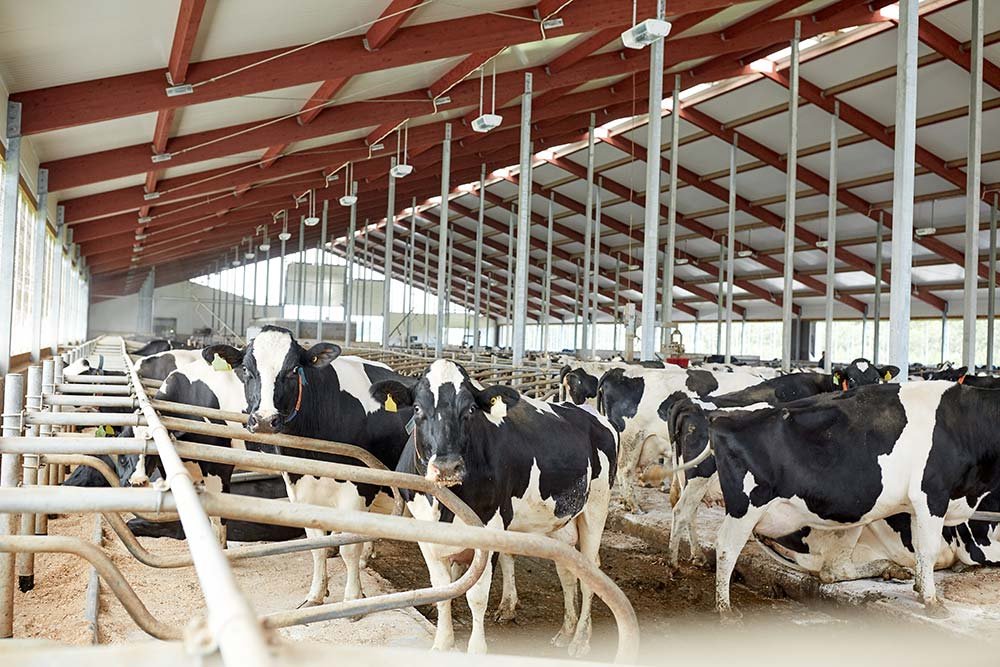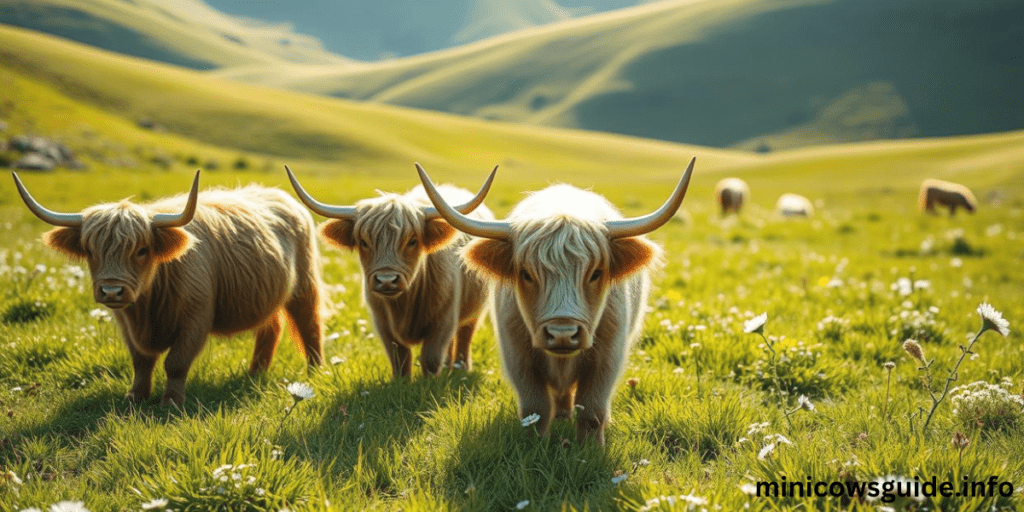In recent years, the demand for mini highland cows has been high due to their adorable and charming appearance. This pint-size version of iconic highland cows has gained popularity. The price of mini highland cows and calves can be different. It depends on a different size, temperature, and genetics. They need less space and less food because of their small size. These cows eat hay, grass, and other things. Their fuzzy coats, appearance, and nature are beautiful.

How much is the weight of a mini highland cow?
A regular miniature cow will remain 36 and 42 inches. A mature mini highland cow weighs between 500 and 700 pounds. These cows are known for their shaggy coat that give them fluffiness and make adorable appearance. Miniature cows are small in size and are manageable, they require less food to eat and less space for grazing. They are friendly and docile, their horns are beautiful for small farmers. Smaller sizes make them ideal for small farms and homesteads. Despite their small stature, mini Highland cows retain the same sturdy build and hardy nature as their full-sized images, which allows them to flourish in a variety of climates, especially colder regions.
How Much Do Highland Cows Cost?
The cost of Highland cows can vary widely depending on several factors like age, gender, pedigree, and breeder reputation. Generally, you can expect the following price ranges:

1. Calves:
Highland calves typically cost between $800 and $1,500.
2. Adult cows
Mature Highland cows can range from $1,500 to $6,500, with high-quality breeding animals often at the higher end of this range.
3. Mini Highland cows
Miniature Highland cows, due to their popularity and unique characteristics, may cost between $1,500 and $7,000, or even more depending on their size, lineage, and physical traits.
Factors that affect the price
The following factors affect the mini highland cows:
1. Age
Calves are normally less expensive than mature cows. Age plays a significant role in life, their values increase since they are mature and often more desirable for breeding or producing milk.
2. Gender
Gender is also another factor that affects the price of miniature cows. Heifers, young female cows, and bulls, young male cows, are more expensive. Heifers can be used for breeding, making them valuable for their looks. Bulls are also pursued for breeding purposes, especially if they come from a strong pedigree or have hot features. Thus, the gender of the cow greatly affects its demand importance and desirability among consumers.
3. Pedigree
This factor also affects the price of mini highland cows. A cow with a strong pedigree, it has a documentary family and comes from superior animals. A strong pedigree can also enhance the cow’s importance due to the potential for improved traits in both size and health. Thus, a cow’s pedigree plays a critical role in defining its needs market, and general cost.
4. Breeder reputation
Breeder reputation is another significant factor impacting mini Highland cows’ price. Cows from well-known or respected breeders often come with a higher expense title because buyers trust these breeders to supply healthy, high-quality animals. A good reputation usually means the breeder follows moral traditions, maintains good care, and selects hot traits like temperament and size.
5. Color and markings
Color and markings significantly influence the price of mini Highland cows. Unique or desirable coat patterns can make certain cows more appealing to customers, often leading to higher prices.
7. Estimated maturity height
Estimated maturity height is a key factor in determining the price of mini Highland cows. Cows with a smaller projected adult size tend to be more useful, as their packed size is a highly in-demand trait in mini cattle. Buyers interested in keeping these cows for pets or small-scale farming often prefer smaller animals that are easier to manage and require less space.
8. Chondro states
These cows carry the gene of chondrodysplasia which causes dwarfing in these miniature cows to shortened height attracting the farmers towards itself and make more expensive than big cows. Their smaller size and appearance make them good or attractive for small farmers.
9. Horn states
Horns also affect the price of cows, some cows are naturally polled means they are hornless. Polled cows may be sensual for buyers who prefer hornless cows for safety. Some cows have horns that also affect the price of cows. Horns enhance the appearance of cows and make them beautiful. Mini highland cows have impressive horns to make them a popular breed.
Housing and space requirements

1. Pasture
Mini highland cows need 0.5 to 1 acre of land for grazing depending on the quality of the pasture and management of practices.
2. Shelter
These cows provide three-sided shelter to protect from extreme weather. Despite the coat of a mini highland cow can more help full to cold weather.
3. Fencing
They need fencing. It is essential for small cows, docile nature escapes an artist. And the combination of woven wire and electric fencing often works.
4. Enrichment
They offer varied landscapes and brushes for natural behaviors like grazing and foraging. Ensuring they have access to an abundance of fresh grass, good shade, and water is important for their health, particularly in hot summers or cold winters.
Conclusion
Mini Highland cows are highly desired due to their adorable appearance and functional advantages. Their price varies based on factors like age, gender, pedigree, and breeder reputation. Smaller size, unique coat patterns, and horn status can further control their cost. These pint-sized cows are ideal for small-scale farming, needing less space and help, while their temperament and care requirements make them appropriate for various environments.





